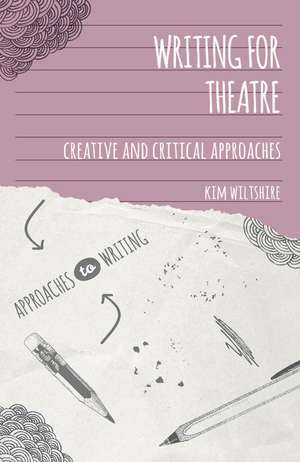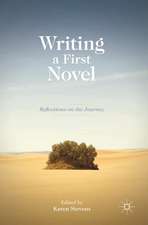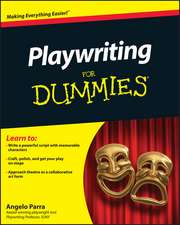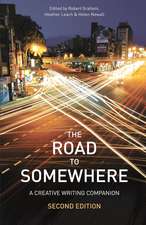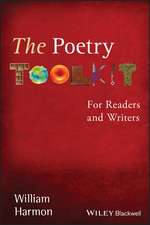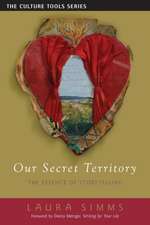Writing for Theatre: Creative and Critical Approaches: Approaches to Writing
Autor Kim Wiltshireen Limba Engleză Paperback – dec 2015
Preț: 178.22 lei
Preț vechi: 207.24 lei
-14% Nou
Puncte Express: 267
Preț estimativ în valută:
34.10€ • 35.61$ • 28.22£
34.10€ • 35.61$ • 28.22£
Carte tipărită la comandă
Livrare economică 04-18 aprilie
Preluare comenzi: 021 569.72.76
Specificații
ISBN-13: 9781137369192
ISBN-10: 1137369191
Pagini: 208
Dimensiuni: 138 x 138 x 8 mm
Greutate: 0.32 kg
Ediția:1st ed. 2015
Editura: Bloomsbury Publishing
Colecția Red Globe Press
Seria Approaches to Writing
Locul publicării:London, United Kingdom
ISBN-10: 1137369191
Pagini: 208
Dimensiuni: 138 x 138 x 8 mm
Greutate: 0.32 kg
Ediția:1st ed. 2015
Editura: Bloomsbury Publishing
Colecția Red Globe Press
Seria Approaches to Writing
Locul publicării:London, United Kingdom
Caracteristici
Develops hands on practical writing skills along with greater critical awareness of creative possibilities
Notă biografică
Kim Wiltshire is a playwright and fiction writer, and is Senior Lecturer in Creative Writing at Edge Hill University, UK.
Cuprins
Introduction CollaborationCritical Engagement What is writing for theatre? On A Practical Note Using This Book A Collaborative Approach to Writing About Playwriting Role definitions PART 1: FOUNDATIONS 1. A Brief History of Theatre for Playwrights Ancient Theatre Medieval Theatre The Renaissance The Seventeenth Century to the Twentieth Century 2. The Cultures of Writing for Theatre - Innovators Innovators of the past Nineteenth Century Innovators Twentieth Century Innovators Who else can new playwrights learn from? 3. Establishing Practice What is theatre for? Why write for theatre? 4. Becoming a Playwright Empathy Ambition/Drive Humility Knowing Your Craft Imagination Knowing the business of theatre 5. Building Blocks Subject and Story Structure Form Voice and Style Building the world Character and Dialogue 6. Foundational Exercises and Key Points Exercise 1 Starting Point Exercise 2 - Character Exercise 3 - Character Exercise 4 - Plotting and Story Exercise 5 - Location Exercise 6 - Economy and exploration of Language Exercise 7 - Performing Work Exercise 8 - Plotting Theatre Shapes Conclusion to Part 1 PART 2: SPECULATIONS Introduction 7. Exploring Possibilities Types of theatre Theatre in the digital age 8. Cultures of Writing for Theatre - Innovators Bringing Theatre to a new audience Who can new playwrights learn from? 9. Exploring Practice: Making Theatre in the 21st Century Changing practice New Forms of Theatre Ethnographic, Verbatim and Participant Led Theatre Dramaturgs and Dramaturgy 10. New Voices, New Forms Collaboration Collaborative Writing Theatre Making Collaboration with other artists Collaboration with other art forms 11. Speculative Exercises and Key Points Exercise 1 - Pitching Exercise 2 - Awareness Exercise 3 - Sensory Exercise 4 - Objects Exercise 5 - Unblocking Exercise 6 - Improvise/Devise Exercise 7 - Art forms Exercise 8 - Patience Exercise 9 - Secrets and Lies Where to go next? A Final Word of Advice on Social Media Conclusion.
